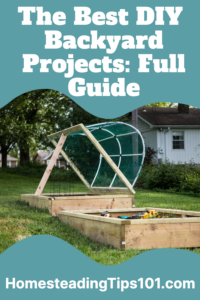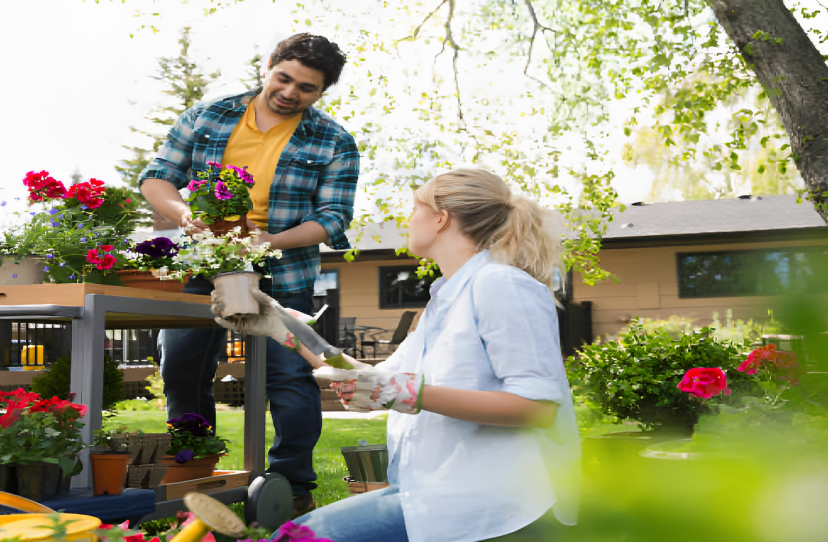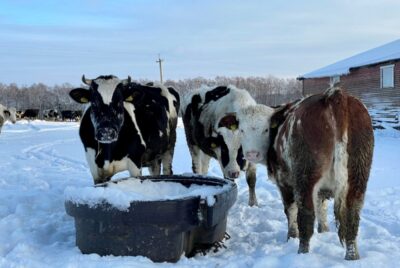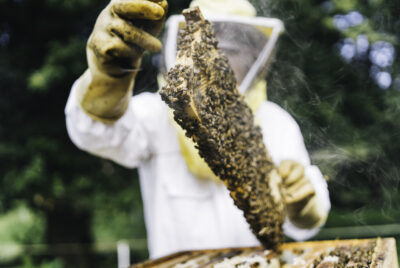The Best DIY Backyard Projects for Homesteaders
"We may earn a commission from purchases made using our links. Please see disclaimer."
As a fellow homesteader and DIY enthusiast, I know how rewarding it can be to tackle backyard projects that increase self-sufficiency. When you build things yourself, you get exactly what you want while saving money. Plus, you gain invaluable skills. From coops to compost bins, here are some of the best DIY backyard projects for your homestead.
Build a Chicken Coop
 DIY Backyard Projects come in all sizes and shapes and this is one of the biggies! Raising backyard chickens is tremendously popular among homesteaders. But buying a pre-fab coop can be pricey. Constructing your own coop allows you to customize the design while saving cash.
DIY Backyard Projects come in all sizes and shapes and this is one of the biggies! Raising backyard chickens is tremendously popular among homesteaders. But buying a pre-fab coop can be pricey. Constructing your own coop allows you to customize the design while saving cash.
Building your very own chicken coop from scratch is one of the most satisfying DIY backyard projects for any homesteader. Not only do you save a bundle compared to buying a pre-made coop, you can cater the design directly to your flock’s needs. Customize the layout, choose your ideal materials, and incorporate special features like nest boxes, perches, runs, and pens. With the right coop design, your chickens will live healthy and productive lives, providing a steady supply of fresh eggs and chemical-free meat.
Reasons to Build Your Own Coop
Building your own chicken coop means you can:
- Create the perfect size and layout for your needs
- Choose your preferred materials and construction methods
- Add special features like nesting boxes, roosts, and runs
- Save money compared to buying a pre-made coop
Coop Design Considerations
When designing your DIY chicken coop, consider factors like:
- Number and breed of chickens
- Climate and weather conditions
- Predator protection
- Ease of access for cleaning
- Ventilation and airflow
- Lighting and electricity
Consulting chicken-raising guides will help you incorporate essential elements into your custom coop.
Coop Building Materials
For the structure, wood is a popular choice. Use decay-resistant cedar for framing and exterior walls. Pine or plywood can work for interior walls and floors. The roof can be made of wood or metal panels.
For fencing, chicken wire or hardware cloth works well. Make doors out of wood. Windows, ventilation gaps, and ramps can be constructed from wood or hardware mesh.
Construct a Greenhouse
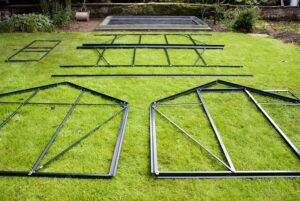 A greenhouse allows you to grow plants year-round. Building your own gives you a customized controlled environment. And in the world of DIY backyard projects it’s one of the biggest, literally! For the homesteader who wants to grow fruits, vegetables, herbs, and flowers regardless of the season or weather conditions outside, constructing a custom greenhouse checks all the boxes. The ideal greenhouse is tailored specifically to the gardener’s needs in terms of size, layout, materials, climate control systems, and more. Build it to your exact specifications for the ultimate functionality and self-sufficient food production capabilities right in your own backyard.
A greenhouse allows you to grow plants year-round. Building your own gives you a customized controlled environment. And in the world of DIY backyard projects it’s one of the biggest, literally! For the homesteader who wants to grow fruits, vegetables, herbs, and flowers regardless of the season or weather conditions outside, constructing a custom greenhouse checks all the boxes. The ideal greenhouse is tailored specifically to the gardener’s needs in terms of size, layout, materials, climate control systems, and more. Build it to your exact specifications for the ultimate functionality and self-sufficient food production capabilities right in your own backyard.
Benefits of a Home Greenhouse
Constructing a DIY greenhouse provides:
- Ability to grow food and plants regardless of season
- Protection from pests, diseases, and wildlife
- Control over temperature, humidity, lighting, and irrigation
- Flexibility to cater to specific plants or gardening methods
- Satisfaction of growing your own fruits, vegetables, and flowers
Greenhouse Design Tips
Consider the following when planning your greenhouse’s design:
- Glazing material like glass or polycarbonate for maximum light
- Site location that gets 6+ hours of daily sun
- Foundation and flooring to handle soil, water, and weight
- Frame material such as wood, PVC, or metal
- Ridge vents, side vents, and fans for ventilation
- Shelving, beds, and work areas for maximizing space
Greenhouse Materials
Common DIY greenhouse materials include:
- Lumber, PVC, or metal for framing
- Glass, plastic sheeting, or polycarbonate panels for glazing
- Concrete, gravel, or pavers for foundation
- Screws, bolts, hinges, and latches for assembly
- Fans, vents, and shutters for climate control
Install a Rainwater Collection System
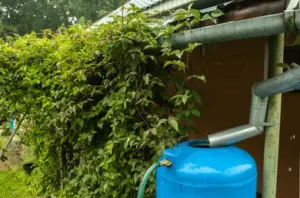 Harvesting rainwater helps reduce your environmental impact. Installing a rain barrel or cistern provides free irrigation for gardens. Adding a simple rain barrel or more complex rainwater catchment system is one of the easiest and most practical DIY projects for sustainable homesteads. Harvesting nature’s water from your rooftop reduces demand on municipal supplies while also lowering monthly water bills. Collected rainwater contains no chlorine, fluoride, or other chemicals – making it ideal for watering ornamental and edible gardens. The satisfaction of water self-sufficiency is well worth the minimal effort to set up barrels, cisterns, gutters, and other rain harvesting components. For a stacked rain barrel system look no further than the article titled “Hubby How To – DIY Stacked Rain Barrel System” from our partners at Big Living Little Footprint.
Harvesting rainwater helps reduce your environmental impact. Installing a rain barrel or cistern provides free irrigation for gardens. Adding a simple rain barrel or more complex rainwater catchment system is one of the easiest and most practical DIY projects for sustainable homesteads. Harvesting nature’s water from your rooftop reduces demand on municipal supplies while also lowering monthly water bills. Collected rainwater contains no chlorine, fluoride, or other chemicals – making it ideal for watering ornamental and edible gardens. The satisfaction of water self-sufficiency is well worth the minimal effort to set up barrels, cisterns, gutters, and other rain harvesting components. For a stacked rain barrel system look no further than the article titled “Hubby How To – DIY Stacked Rain Barrel System” from our partners at Big Living Little Footprint.
Why Harvest Rainwater?
Benefits of collecting rainwater include:
- Lower water bills
- Less demand for municipal supply
- Chemical/mineral-free water for plants
- Preparedness if utilities are disrupted
- Satisfaction of increased self-reliance
Rainwater Collection System Components
A basic rainwater harvesting setup includes:
- Catchment surface – usually your roof
- Gutters and downspouts to transport water
- Screened filter box to remove debris
- Storage container like a barrel or cistern
- Overflow valve and spigot for watering garden
Setting Up Your Rain Barrel
Installing a DIY rain barrel is straightforward:
- Obtain food-grade barrel and modify with intake, outflow, and overflow ports
- Set up the barrel on a sturdy platform near a downspout
- Attach the hose to the outflow port for watering plants
- Connect downspout diverter to barrel inlet
- Enjoy chemical-free rainwater for your garden!
Make a Compost Bin
 Composting food and yard waste provides nutrient-rich fertilizer for your garden soil while reducing landfill contributions. A DIY backyard compost bin is essential for any eco-conscious homesteader focused on sustainability. Recycling organic waste into rich, mineral-packed soil amendments benefit all your gardening endeavors while also keeping tons of refuse out of landfills each year. Aside from the cost savings, building your own compost system allows customization so you can compost as efficiently as possible. Design and construct the perfect enclosure suited to your space, waste volume, and composting style.
Composting food and yard waste provides nutrient-rich fertilizer for your garden soil while reducing landfill contributions. A DIY backyard compost bin is essential for any eco-conscious homesteader focused on sustainability. Recycling organic waste into rich, mineral-packed soil amendments benefit all your gardening endeavors while also keeping tons of refuse out of landfills each year. Aside from the cost savings, building your own compost system allows customization so you can compost as efficiently as possible. Design and construct the perfect enclosure suited to your space, waste volume, and composting style.
Composting Benefits
Building your own compost bin lets you:
- Convert waste into organic fertilizer
- Improve soil structure and moisture retention
- Increase soil nutrient levels for better plant growth
- Reduce the need for chemical fertilizers
- Keep waste out of landfills
Compost Bin Designs
Common DIY compost bin options include:
- Enclosed bins made from wood pallets, wire mesh or plastic
- Geobins constructed from hay bales or other materials
- Multi-chamber rotate-to-mix bins
- Simple uncovered piles (least ideal as they lose moisture)
Composting Materials
Effective compost can be made from:
- Food scraps like fruit/veggie peels, egg shells, and coffee grounds
- Yard waste such as leaves, grass clippings, and straw
- Used potting soil
- Sawdust, woodchips, and shredded paper
- Manure and hay from livestock or rabbits
- Coffee filters, tea bags, and cardboard tubes
Build Garden Beds and Planters
Custom garden beds provide control over the soil environment for optimal plant growth.
Raised Beds vs. In-Ground Gardens
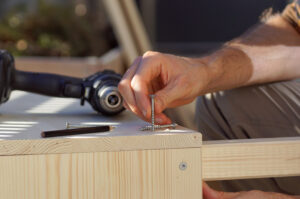 Compared to traditional gardens, raised beds:
Compared to traditional gardens, raised beds:
- Allow design flexibility for accessible heights
- Provide proper drainage and aeration
- Extend the growing season with warmer soil
- Reduce weed growth and soil compaction
- Keep pathways clear for movement
Constructing Garden Beds
Approaches for outstanding DIY garden beds include:
- Borders made of lumber, bricks, stone, or other materials
- Frames filled with enriched soil, compost, and amendments
- Elevated heights for comfort, yield, and drainage
- Mulch to limit weeds and retain moisture
- Drip irrigation systems to conserve water
Garden Bed Material Options
You can build handsome and functional beds from:
- Cedar, redwood, or pine lumber
- Landscape timbers or railway ties
- Cinder blocks, brick or stone
- Recycled plastic lumber or composite materials
- Galvanized stock tanks or troughs
Whatever materials you choose, custom garden beds boost growing power!
Conclusion
With a bit of planning and elbow grease, you can complete a range of DIY backyard projects to increase your homesteading self-sufficiency. Building your own structures like coops, greenhouses, and compost bins lets you create solutions tailored to your needs and site. Installing water harvesting systems and garden beds enhances production and sustainability. Tackling backyard projects yourself is deeply rewarding while benefiting your homestead. So roll up your sleeves – your self-reliant homestead oasis awaits!
FAQs
Q: What are the easiest DIY projects for beginners?
A: Beginner-friendly starter projects include installing rain barrels, building simple compost bins from pallets or fencing, and constructing raised garden beds from basic lumber.
Q: Should I build a chicken coop before getting chickens?
A: It’s best to have your chicken coop fully built and ready for occupancy before getting chickens. This allows them to settle right into their new home.
Q: What permits do I need for homestead projects?
A: Building permits are usually required for structures like chicken coops and greenhouses. There may also be permits for composting, rainwater collection, and livestock. Check with your city code enforcement office.
Q: Can I build a greenhouse affordably from recycled materials?
A: Yes! DIY greenhouses can be built inexpensively from reused and repurposed materials like old windows, garage door panels, and scrap lumber. Get creative!
Q: How much land do I need for homesteading projects?
A: You can do many starter homestead projects like composting, rain barrels, and raised beds on a standard residential lot. For larger-scale endeavors like chicken and livestock raising, more land is ideal.
